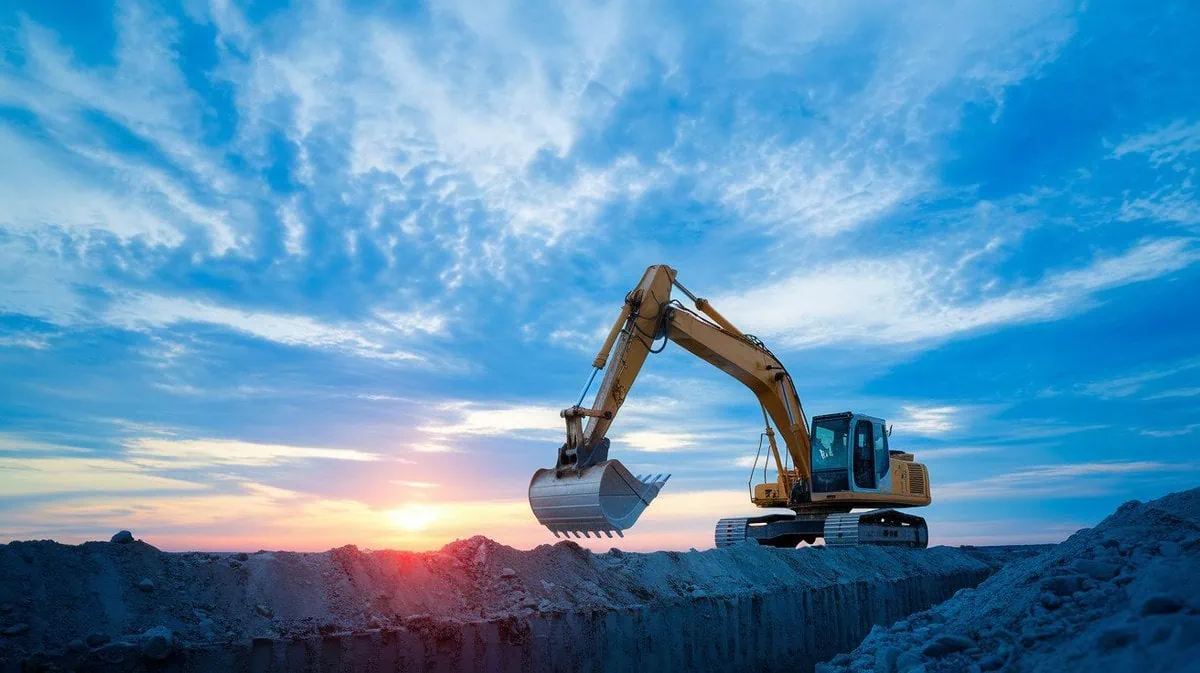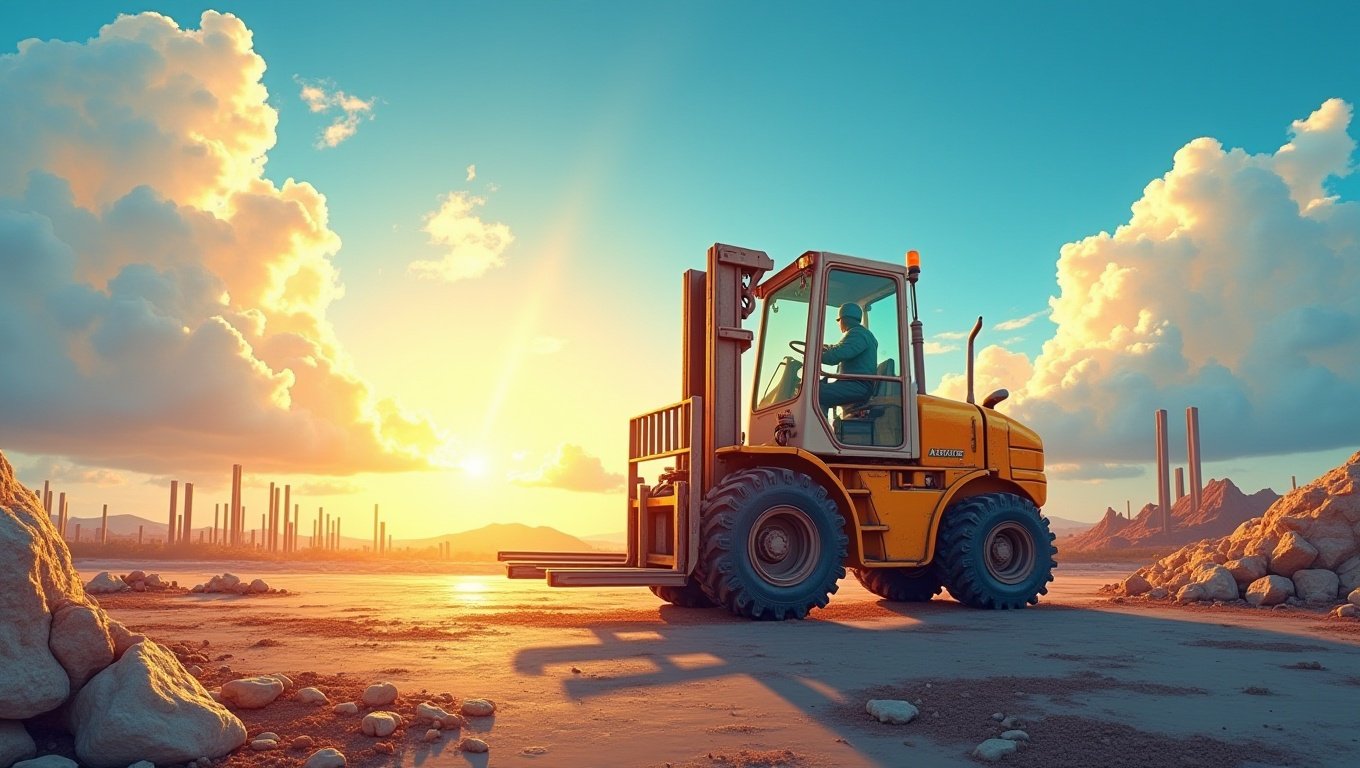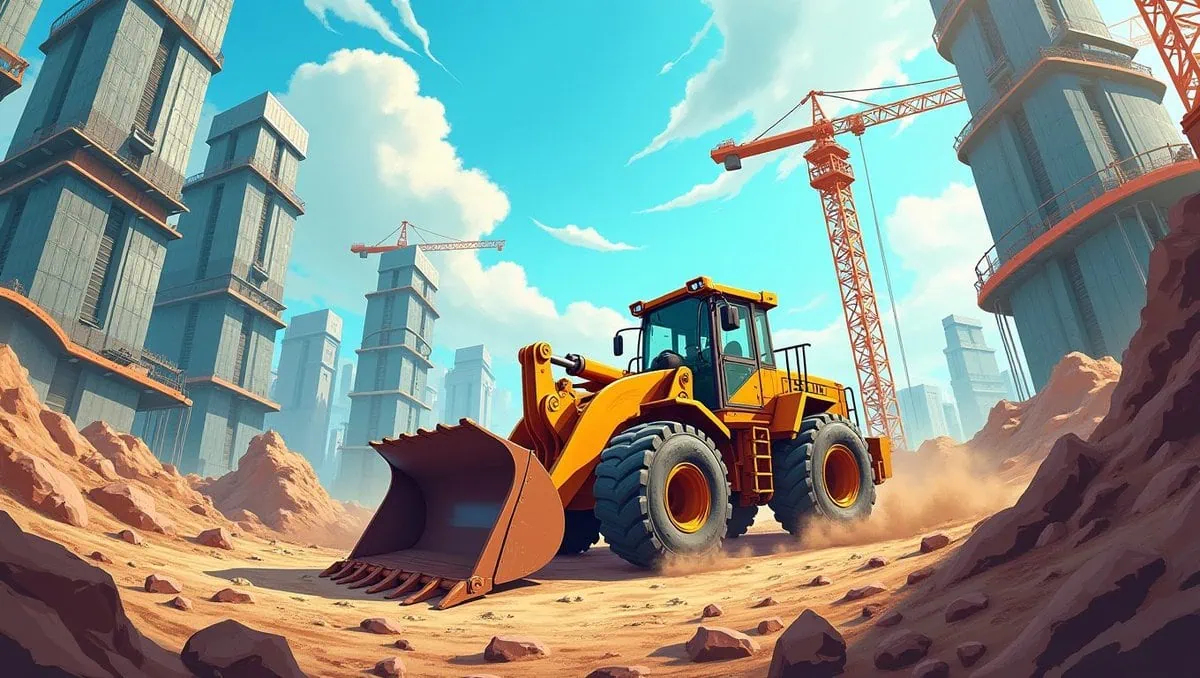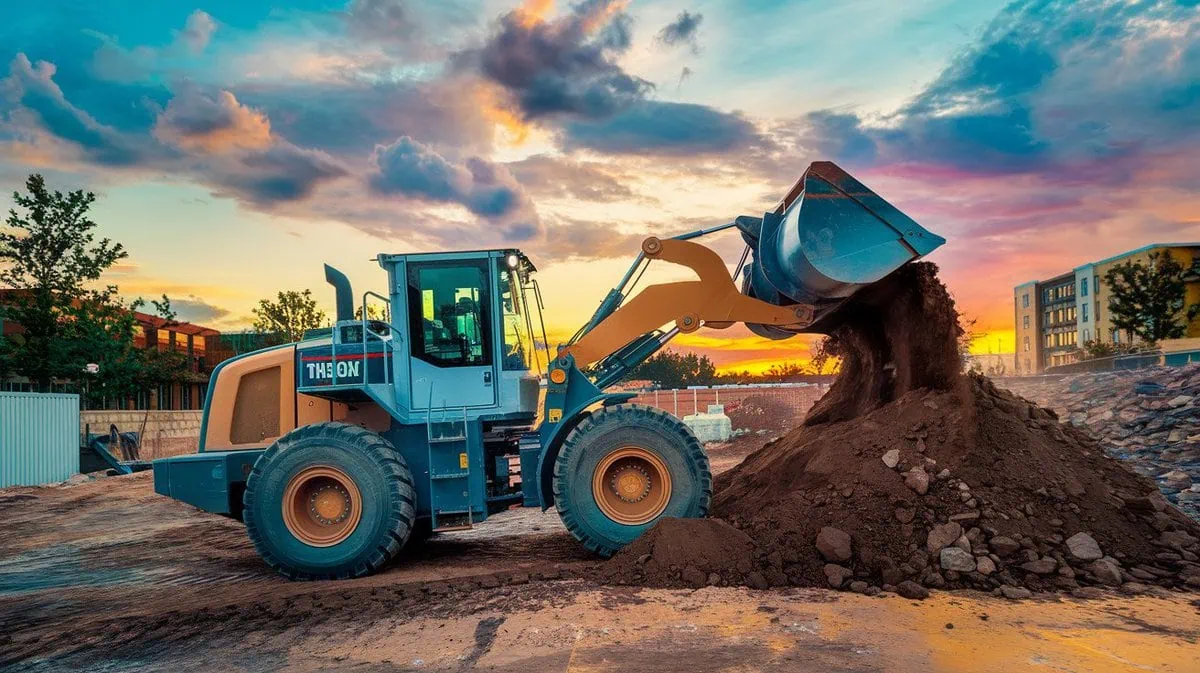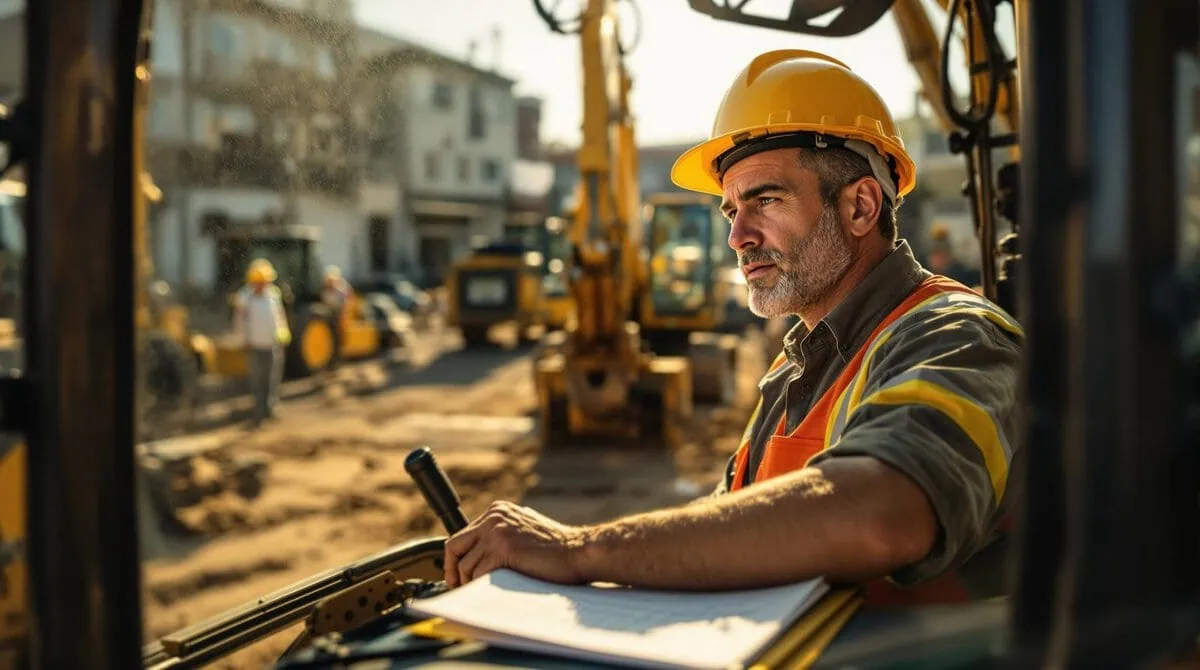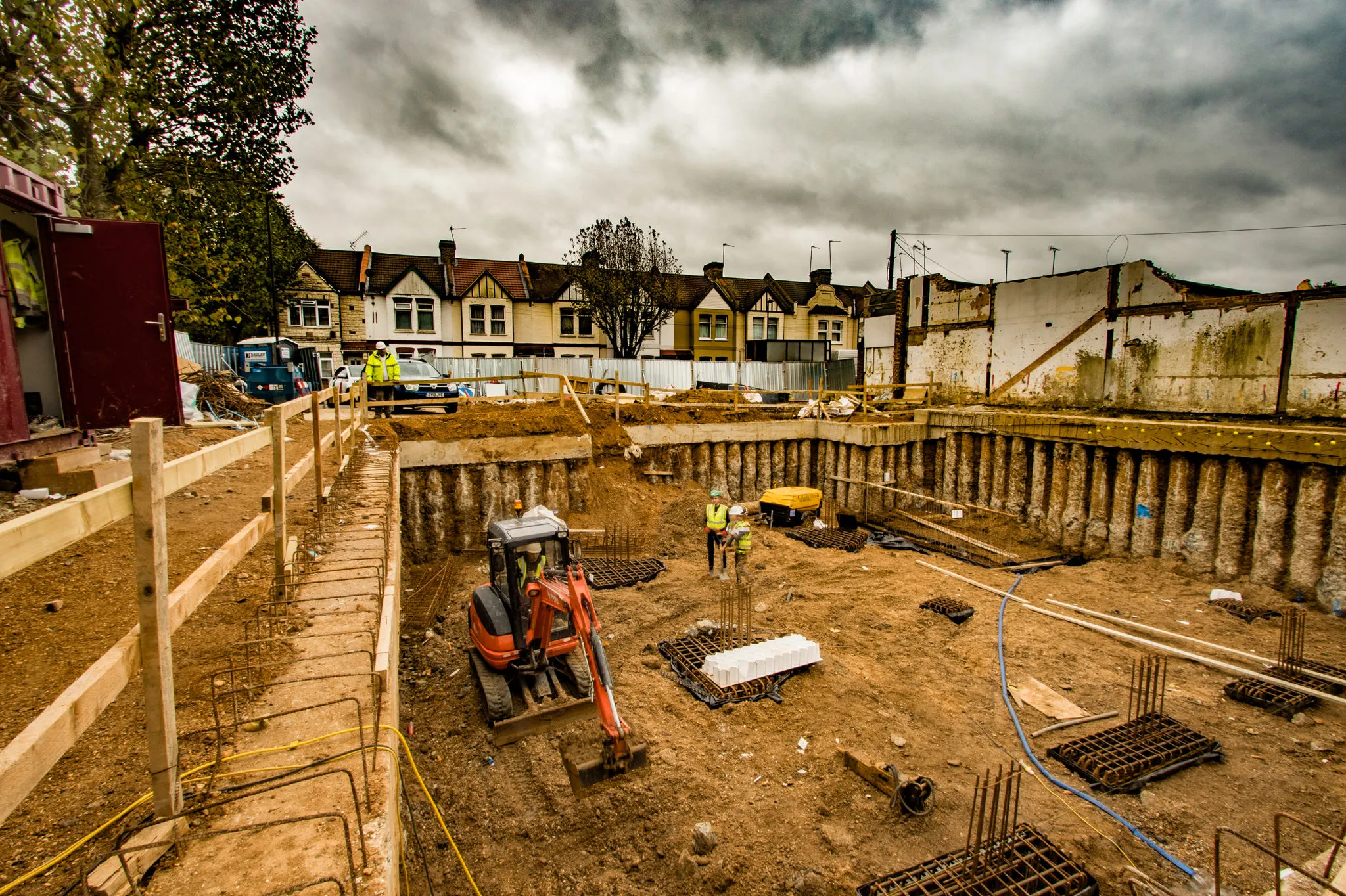При планировании какого-либо крупномасштабного строительства или проекта, движущегося землей, одним из наиболее важных соображений является выбор правильного оборудования. Среди множества доступных видов механизма, бульдозеры Выделитесь из -за их вариантов мощности, универсальности и размеров. Тем не менее, многие менеджеры проектов сталкиваются с дилеммой которой Размеры бульдозер наиболее подходят для их конкретных потребностей. Если вы не уверены в выборе правильного Размеры бульдозер, не волнуйтесь - это руководство поможет вам понять доступность Размеры бульдозер и как принять правильное решение.
Выбор правильного Размеры бульдозер имеет решающее значение для эффективности, экономической эффективности и успеха проекта. Такие факторы, как местность, масштаб проекта и бюджет, должны быть рассмотрены. С правильным руководством вы можете с уверенностью выбрать лучшее бульдозерные модели для вашего проекта.
Теперь давайте погрузимся глубже в разные Размеры бульдозерДоступно и как определить наилучшие размеры бульдозеры для потребностей ваших проектов.
Какие размеры бульдозер?
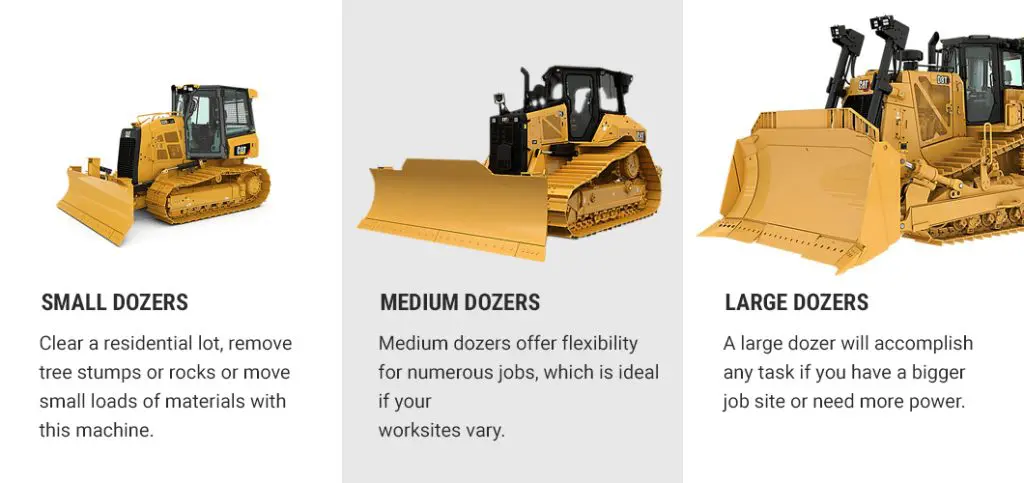
Когда дело доходит до Размеры бульдозер, Есть три основные категории: маленькие, средние и большие. Каждый размер служит определенной целью и предназначена для выполнения различных типов задач. Понимание этих категорий поможет вам принять обоснованное решение на основе характера вашего проекта.
Маленькие бульдозеры
Маленькие бульдозеры Компактные, легкие машины, предназначенные для легкой маневренности в плотных или ограниченных пространствах. Эти машины обычно используются для жилых проектов, озеленения и мелкомасштабной коммерческой работы. С мощностью в диапазоне от 70 до 100 л.с. они идеально подходят для более легких задач, движущихся земли.
Преимущества небольших бульдозеров:
- Маневренность: Идеально подходит для трудных мест, где большие машины будут бороться за эффективную работу.
- Рентабельный: Небольшие бульдозеры, как правило, более доступны, как с точки зрения первоначальной стоимости покупки, так и в текущем обслуживании.
- Топливная эффективность: Их меньшие двигатели потребляют меньше топлива, что делает их более экономичным выбором для небольших проектов.
Приложения:
- Жилые проекты: Небольшие бульдозеры обычно используются для строительства дома, особенно когда проект требует перемещения меньшего количества земли или мусора.
- Ландшафт: В проектах по озеленению небольшой бульдозер может помочь с выравниванием, очисткой растительности или движущейся почвы.
- Легкая коммерческая работа: Для небольших коммерческих разработок эти машины часто используются для подготовки площадки и движения земли.
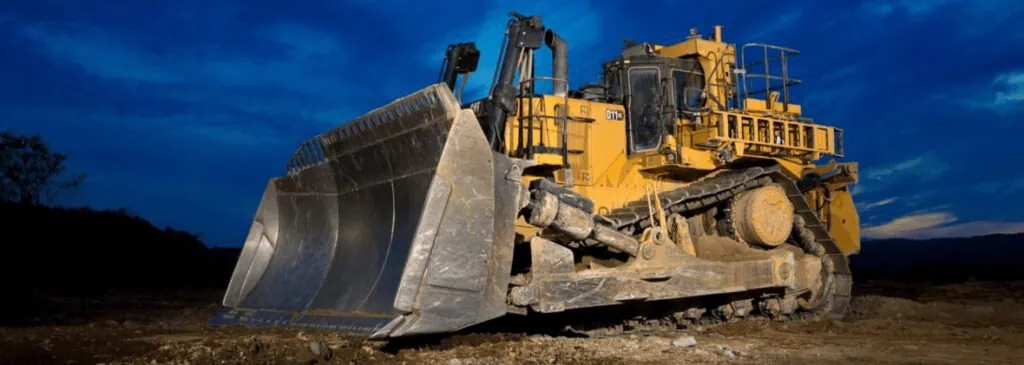
Средние бульдозеры
Средний бульдозер модели Предложите баланс между силой и маневренностью, что делает их универсальными и подходящими для широкого спектра строительных задач. Эти машины, как правило, варьируются от 160 до 250 л.с., обеспечивая дополнительную мощность, необходимую для более сложных проектов, остается достаточно гибким, чтобы работать на различных местах.
Преимущества средних бульдозеров:
- Универсальность: Эти бульдозеры могут выполнять ряд задач, в том числе дорожное строительство, перемещение земли и базовую подготовку земли.
- Повышенная мощность: С большей мощностью, чем небольшими бульдозерами, средние машины способны выполнять более требовательные задачи, оставаясь топливными.
- Адаптируемость: Средние бульдозеры могут работать по различным типам местности, от относительно плоской земли до умеренно грубых поверхностей.
Приложения:
- Дорожное строительство: Средние бульдозеры часто используются в проектах строительства дорожного движения, где они используются для выравнивания земли, оценки и перемещения земли для подготовки участка.
- Развитие инфраструктуры: Эти машины идеально подходят для проектов городского развития, таких как установка коммунальных услуг, расширение дороги и другие задачи гражданского строительства.
- Поляна земли: Средние бульдозеры эффективны в очищающей кисти, деревьях и других препятствиях на средних и больших участках земли.
Большие бульдозеры
Большие бульдозеры тяжелые бульдозерные модели Построенный для массивных задач, движущихся земли в сложных условиях. С мощностью в диапазоне от 300 до 500 л.с. эти бульдозеры предназначены для обработки экстремальных рабочих нагрузок, таких как те, которые встречаются в добыче полезных ископаемых, крупномасштабной строительстве и очистке земли. Их большие лезвия и высокая мощность позволяют им быстро и эффективно перемещать огромные количества земли.
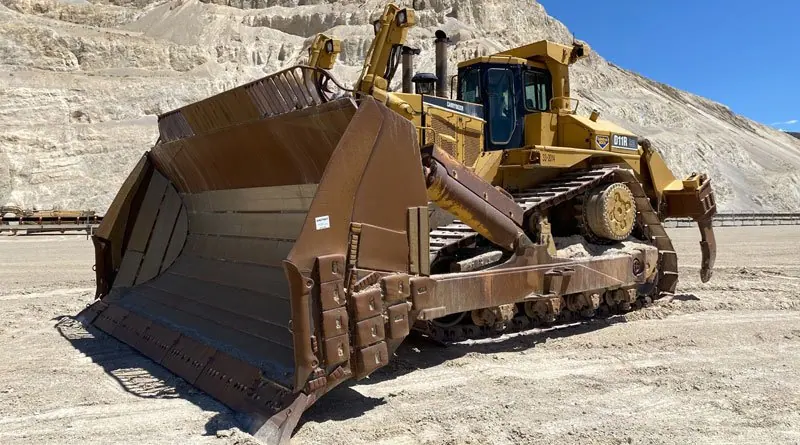
Преимущества больших бульдозеров:
- Высокая мощность: Эти машины могут справиться с самыми жесткими и наиболее требовательными земными задачами.
- Долговечность: Большие бульдозеры предназначены для выдержания сильного использования в течение длительных периодов, даже в суровых условиях.
- Эффективность: Большие бульдозеры могут выполнять задачи намного быстрее, чем небольшие машины, что делает их более рентабельными для крупных проектов.
Приложения:
- Добыча полезных ископаемых: Большие бульдозеры часто используются в майнинге для прозрачной обломки, перемещать землю и выравнивать землю для действий.
- Крупномасштабная очистка земли: Для масштабных проектов по развитию земли или вырубки лесов крупные бульдозеры могут очистить большие площади земли за короткое время.
- Тяжелые строительные проекты: Будь то строительство автомагистралей или подготовка массивного промышленного участка, крупные бульдозеры обеспечивают силу, необходимую для перемещения огромного количества земли.
Как выбрать правильные размеры бульдозер для вашего проекта
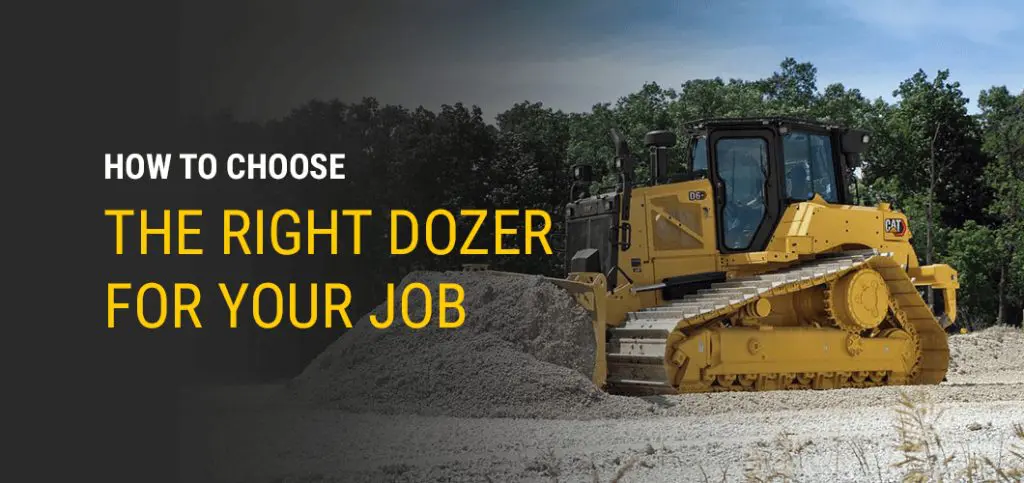
Выбор правильного Размеры бульдозер является критическим решением для успеха вашего проекта, поскольку он напрямую влияет на эффективность, производительность и общую экономическую эффективность машины. Чтобы вы выбрали наиболее подходящие бульдозерные моделиВы должны тщательно оценить несколько ключевых факторов: масштаб вашего проекта, тип местности и сложность задействованных задач. Вот разрушение того, как эти факторы влияют на ваше решение бульдозерные модели:
1. Шкала проекта
Размер проекта является одним из наиболее значимых факторов при выборе бульдозер размерыПолем Объем работы определяет масштаб требуемого земного движения, что, в свою очередь, влияет на бульдозерные модели, которые могут эффективно обрабатывать нагрузку.
- Мелкие проекты: Для жилых работ или небольших коммерческих проектов, маленький бульдозер обычно достаточно. Эти проекты часто требуют менее мощных машин, так как они связаны с меньшим количеством движения Земли и могут быть выполнены в более тесных пространствах. Такие задачи, как выравнивание земли для домашнего фундамента, очистка щетки или перемещение небольшого количества мусора, идеально подходят для небольших бульдозеров.
- Средние проекты: Для таких задач, как строительство дорог, оценка земель или подготовка инфраструктуры, Средний бульдозер Обычно лучший выбор. Эти проекты требуют большей мощности и более крупных лезвий для перемещения значительных количеств Земли, но не в той мере, в которой крупномасштабная операция по добыче. Средний бульдозер обеспечивает необходимый баланс маневренности, мощности и эффективности.
- Крупномасштабные проекты: Крупные строительные, добычу или крупные проекты по очистке земли. Большие бульдозерыПолем Эти бульдозеры предназначены для тяжелых задач, таких как очистка массивных участков земли, перемещение огромного количества земли и обработка чрезвычайно жесткой местности. Если ваш проект требует высокой производительности и возможности работать в суровых условиях, необходимы большие бульдозеры, чтобы эффективно двигаться.
2. Тип местности
Тип местности, где будет работать бульдозер, играет решающую роль в определении того, что бульдозерные модели лучше всего подходит для вашего проекта. Особенности местности (такие как рок, холмистый или плоский) будут повлиять на то, насколько хорошо работает бульдозер и как легко он может ориентироваться в области.
- Неровная или узкая местность: Если местность неровная, с холмами, камнями или узкими пространствами, меньшие бульдозеры часто более эффективны. Их компактный размер обеспечивает лучшую маневренность, что позволяет им работать в тесных или ограниченных областях, где будут бороться более крупные машины. Например, а маленький бульдозер Можно легко перемещаться по жилым районам или районам с ограниченным доступом, что делает его идеальным для подготовки площадки или озеленения задач.
- Плоская местность: На плоской открытой местности, средние или большие бульдозеры могут работать более эффективно. Эти машины обладают большей мощностью, что позволяет им справляться с крупномасштабными земляными задачами, такими как оценка дорожных дорог или крупные строительные проекты. Они могут быстрее очищать большие участки земли и поддерживать более высокий уровень производительности в обширных пространствах.
- Грубая или скалистая местность: Для проектов, расположенных в районах с каменистой или сложной местностью, Большие бульдозеры обычно лучший выбор. Их надежная сборка и более высокая мощность позволяют им прорываться через жесткие поверхности, эффективно перемещать валуны и чистить мусор. Треки крупного бульдозера предназначены для обработки грубой местности, обеспечивая лучшую стабильность и тягу по сравнению с небольшими машинами.
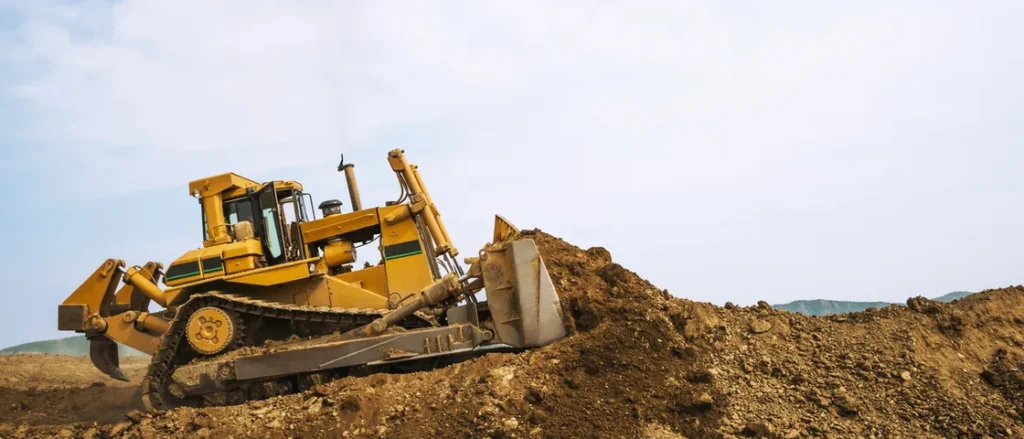
3. Требования задачи
Разные задачи требуют разных возможностей и Размеры бульдозер Вы выбираете, должны соответствовать конкретным потребностям работы. Бульдозеры являются универсальными машинами, но они специализируются на определенных типах задач в зависимости от их размера и мощности.
- Небольшие задачи: Маленькие бульдозеры лучше всего подходят для задач, которые включают точность и более легкую работу по земле. Такие задачи, как очистка легкой растительности, копание небольших траншей или оценка жилой дороги, идеально подходят для небольших бульдозеров. Их меньший размер также делает их более гибкими, идеально подходящими для работ, которые требуют гибкости и доступа к труднодоступным областям.
- Средние задачи: Если ваш проект включает в себя такие задачи, как выравнивание земли, подготовка строительных площадок или оценок дорог, Средний бульдозер Ваш лучший выбор. Средние бульдозеры могут справиться с более требовательными задачами, сохраняя при этом разумный уровень маневренности. Например, если вы строите новую дорогу или укладываете утилиты, средний бульдозер будет эффективно обрабатывать движение материала, оставив вас с гладкой, ровной поверхностью.
- Тяжелые задачи: Большие бульдозеры необходимы для проектов, которые включают в себя перемещение значительного количества земли, таких как добыча полезных ископаемых, крупномасштабная очистка земли или раскопки. Эти задачи требуют машины с достаточной мощностью, чтобы перемещать большое количество почвы, обломков или мусора. Большой бульдозер также может решать проекты, в которых необходимы глубокие сокращения на землю, например, в подготовке крупных фондов или создание траншей для коммунальных услуг.
4. Соображения топлива и технического обслуживания
При выборе права Размеры бульдозер Важно, что в равной степени важно следить за долгосрочными затратами на топливо и техническое обслуживание. По мере продвижения к более крупным машинам затраты, связанные с расходом топлива и обычным обслуживанием, могут значительно увеличиться.
- Маленькие бульдозеры: Эти машины, как правило, более экономичные и легкие в обслуживании из-за их меньших двигателей и более простого дизайна. Для небольших проектов с ограниченной продолжительностью небольшой бульдозер часто является наиболее экономически эффективным вариантом. Они дешевле запускать и поддерживать, что помогает сохранить проект в рамках бюджета.
- Средние бульдозеры: Несмотря на то, что они немного дороже поддержания и топлива, чем небольшие бульдозеры, бульдозеры среднего размера находятся на хорошем балансе между мощностью и экономической эффективностью. Они способны выполнять более требовательные задачи, сохраняя при этом относительно низкий расход топлива по сравнению с более крупными машинами.
- Большие бульдозеры: Эти машины являются наиболее дорогими для работы с точки зрения расхода топлива и затрат на техническое обслуживание. Тем не менее, они обеспечивают мощность и возможности, необходимые для эффективного выполнения крупномасштабных, тяжелых проектов. Важно учитывать соотношение затрат и выгод для этих машин, поскольку они обеспечивают более высокую производительность в течение более короткого периода, что потенциально снижает общую графику проекта.
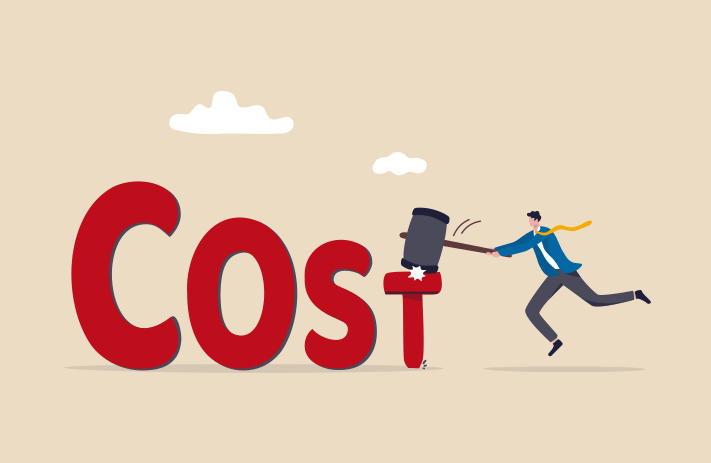
5. Бюджет и продолжительность проекта
Наконец, важно учитывать бюджет вашего проекта и график. Меньшие бульдозеры могут быть более доступными заранее, но если проект займет больше времени, чтобы завершить из -за недостаточного мощного оборудования, дополнительное время, потраченное время, может перевесить первоначальную экономию. С другой стороны, Большой бульдозерМожет иметь более высокую первоначальную стоимость, но его эффективность может помочь сократить общую продолжительность проекта, потенциально сэкономив деньги в долгосрочной перспективе.
Рассматривая все эти факторы, такие как масштаб проекта, местность, сложность задач, затраты на топливо и обслуживание и ваш общий бюджет, вы можете принять обоснованное решение, на котором бульдозерные модели лучше всего для ваших конкретных потребностей проекта. Всегда помните, что выбор правильного бульдозера не только гарантирует, что работа завершена вовремя, но и сводит к минимуму риск дорогостоящих задержек и неэффективности.
Различные размеры и рекомендуемые модели бульдозер
Маленькие бульдозеры:
Небольшие бульдозеры идеально подходят для проектов с ограниченным пространством и более легкими задачами, движущимися землями. Они предлагают преимущество маневренности и эффективности использования топлива, что делает их идеальными для жилых и легких коммерческих проектов. При работе в ограниченных пространствах сияют меньшие бульдозеры, предлагая превосходную ловкость, не имея ущерба для производительности.
| Модель | Тип | Лошадиная сила | Емкость лезвия | Идеальное использование | Преимущества |
| КАТ Д3К | Маленький | 70-85 л.с. | 1.3-1.7m³ | Жилой, легкий коммерческий | Экономичный, простой в эксплуатации |
| Komatsu D37px | Маленький | 75-90 л.с. | 1,5-1,8 м³ | Жилые, ограниченные пространства | Высокая маневренность, экономия затрат |
Средние бульдозеры:

Для более существенных строительных проектов средние бульдозеры достигают правильного баланса между энергией и маневренностью. Эти машины подходят для таких задач, как строительство дорожного движения, развитие земли и развитие земли. С их надежными сборками и универсальными функциями средние бульдозеры могут обрабатывать различные территории, от плоской земли до слегка прочных поверхностей.
| Модель | Тип | Лошадиная сила | Емкость лезвия | Идеальное использование | Преимущества |
| КАТ D7G | Середина | 180-200 л.с. | 3,5-4,2 м³ | Дорожное строительство, переезд земли | Высокая стабильность, надежная производительность |
| Комацу D65 | Середина | 170-210 л.с. | 3.2-4,5 м³ | Инфраструктура, развитие земли | Топливный, универсальный |
Большие бульдозеры:
Большие бульдозеры-это энергетические дома, движущегося земли. Они построены для тяжелых задач, которые требуют огромной прочности и долговечности, таких как добыча полезных ископаемых, крупномасштабные поляны земли и тяжелые проекты, движущиеся землей. Их высокая мощность и большая способность лезвия позволяют им справиться с самыми сложными рабочими местами, даже в суровых условиях.
| Модель | Тип | Лошадиная сила | Емкость лезвия | Идеальное использование | Преимущества |
| Кошка D11 | Большой | 350-400 л.с. | 10.0-12.00M³ | Тяжелая земля движется, добыча | Выдающаяся власть, долговечность |
| Komatsu D375A | Большой | 370-450 л.с. | 10,5-12,5 м³ | Добыча, большая строительство | Высокая мощность, долгосрочная операция |
Распространенные ошибки при выборе Размеры бульдозер

Выбор правильного Размеры бульдозер жизненно важно для эффективности проекта и управления затратами. Многие делают общие ошибки, которые могут вызвать задержки, увеличение затрат и снижение производительности. Вот как их избежать:
Недооценка размера проекта
Бульдозер вес очень важно, если выбор бульдозер, который слишком мал для проекта, может значительно снизить производительность. Небольшие бульдозеры могут бороться с крупномасштабными задачами, что приводит к задержкам и дополнительным затратам на дополнительное оборудование или рабочую силу. Всегда оценивайте размер проекта и требования к материалам перед выбором машины. Проконсультируйтесь с прошлыми проектами или экспертами, чтобы гарантировать, что бульдозер может справиться с рабочей нагрузкой.
Переоценка потребностей в мощности
Выбор негабаритного бульдозера для простой задачи может быть расточительным. Большие бульдозеры потребляют больше топлива, требуют большего технического обслуживания и могут быть трудно маневрировать в жестких пространствах. Это может привести к ненужным эксплуатационным затратам. Найдите баланс между мощностью и потребностями проекта, выбрав машину с достаточной мощностью, не выходя за борт. Обратитесь к рекомендациям производителя или проконсультируйтесь с профессионалами.
Пренебрежение затратами на техническое обслуживание
Большие бульдозеры поставляются с более высокими затратами на техническое обслуживание из -за их более сложных компонентов. Выпуск этих долгосрочных расходов может привести к перерасходу бюджета. При выборе бульдозера учитывайте как первоначальную стоимость, так и в будущем техническом обслуживании, включая топливо, ремонт и обслуживание. Отслеживайте историю обслуживания, чтобы предвидеть будущие потребности и рассмотреть расширенные гарантии для управления затратами на ремонт.
Игнорирование условий местности и рабочих мест
Различные территории требуют разных типов бульдозеры. Бульдозер, предназначенный для плоской местности, может бороться с скалистыми или неровными поверхностями и наоборот. Выбор неправильной машины для местности может снизить эффективность и нанести ущерб. Тщательно оцените условия рабочей площадки, прежде чем сделать выбор, обеспечивая оборудование бульдозера для обработки наземных условий.
Ошибочно осуществляя доступность оператора
Большие, более мощные бульдозеры требуют квалифицированных операторов. Если у вас нет доступа к опытным водителям, вы можете столкнуться с задержками или повреждением оборудования. Меньшие машины легче работать и могут лучше подходить для команд с ограниченным обучением. Убедитесь, что ваша команда должным образом обучена обработать бульдозер, большой или маленький, чтобы избежать неэффективности и несчастных случаев.
Избегая этих ошибок и тщательно оценивая потребности проекта, местности и оператора, вы можете выбрать правильный размер бульдозер, повышение эффективности и минимизация затрат.
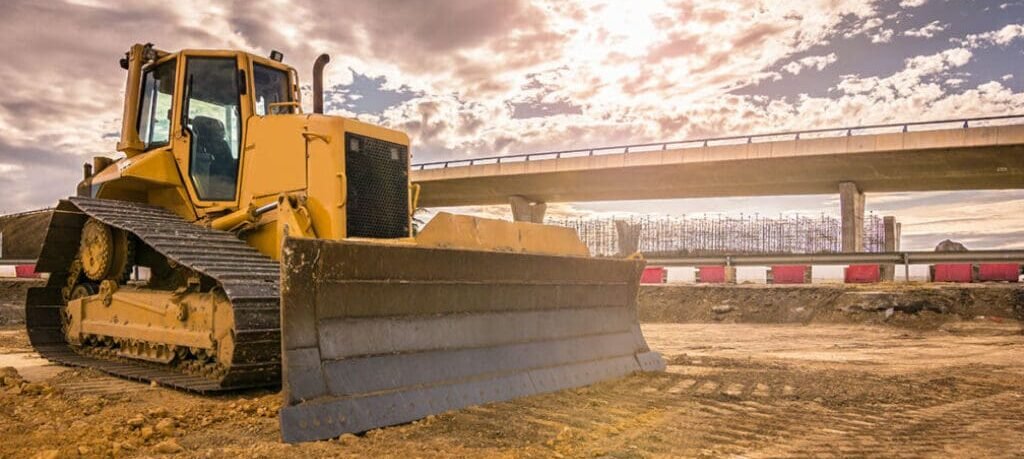
Заключение:
Выбор правильного Размеры бульдозер необходимо для эффективности проекта. Рассмотрим такие факторы, как масштаб проекта, местность, требования к задаче и бюджет при выборе идеала бульдозерные моделиПолем Более крупные проекты требуют более мощных машин, в то время как небольшие проекты получают выгоду от компактных бульдозеров. Выбирая право Размеры бульдозер, Вы будете повысить производительность, минимизировать затраты и избегать задержек, обеспечивая успешный результат.

